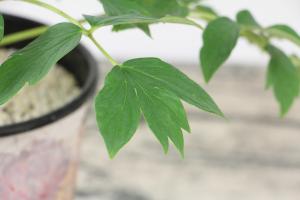Is Dry Needling Good for Plantar Fasciitis?
Plantar fasciitis is a painful condition that affects the plantar fascia, a thick band of tissue that runs across the bottom of your foot connecting your heel bone to your toes. It’s a common injury in athletes who engage in running, jumping or other high-impact activities. Traditional treatments for plantar fasciitis include rest, ice, physical therapy, and pain medication. However, dry needling is emerging as a popular alternative treatment method for this condition. In this article, we will examine the effectiveness of dry needling for plantar fasciitis.
What is Dry Needling?
Dry needling is a technique used by physical therapists to treat pain and movement impairments. It involves the insertion of a thin, sterile needle into trigger points in the muscles, fascia, and connective tissues. The aim is to stimulate the natural healing processes of the body by releasing tension and increasing circulation. Dry needling is different from acupuncture in that the needles are inserted deeper into the tissue, targeting specific trigger points instead of meridian points.
How Does Dry Needling Work for Plantar Fasciitis?
Dry needling is believed to work for plantar fasciitis by releasing the tension in the plantar fascia and surrounding muscles. The needles are inserted into trigger points along the bottom of the foot, as well as in the calf muscle and Achilles tendon. The therapist may move the needle back and forth or leave it in place for a few minutes, depending on the individual’s response. The goal is to elicit a twitch response, which indicates the release of tension in the affected muscles.
What are the Benefits of Dry Needling for Plantar Fasciitis?
Dry needling for plantar fasciitis has several benefits, including:
Pain Relief: Dry needling can provide quick and long-term pain relief by releasing tension in the muscles and fascia.
Improved Mobility: By releasing tension in the plantar fascia and surrounding muscles, dry needling can improve mobility and range of motion.
Non-Invasive Treatment: Dry needling is a non-invasive treatment method, meaning there is no surgical intervention required.
Reduced Risk of Side Effects: Unlike medication, dry needling has few side effects, making it a safe treatment option for plantar fasciitis.
Who is a Good Candidate for Dry Needling for Plantar Fasciitis?
Dry needling for plantar fasciitis may be a good option for individuals who have not responded to traditional treatment methods or prefer non-invasive procedures. However, it’s important to consult with a licensed physical therapist before undergoing dry needling to determine whether it’s a suitable treatment option for your specific condition.
Conclusion
Dry needling for plantar fasciitis is becoming an increasingly popular alternative treatment method for individuals suffering from this painful condition. By releasing tension in the plantar fascia and surrounding muscles, dry needling can provide pain relief and improve mobility. It’s a non-invasive treatment method with few side effects, making it a safe option for many patients. While dry needling may not be appropriate for everyone, it’s worth speaking with a licensed physical therapist to determine whether it’s a suitable option for your specific condition.

 how many times do yo...
how many times do yo... how many planted tre...
how many planted tre... how many pine trees ...
how many pine trees ... how many pecan trees...
how many pecan trees... how many plants comp...
how many plants comp... how many plants can ...
how many plants can ... how many plants and ...
how many plants and ... how many pepper plan...
how many pepper plan...





























